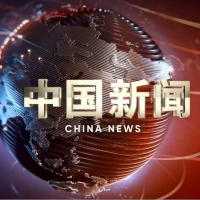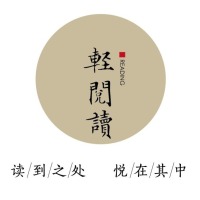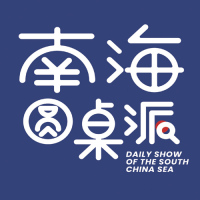



















Marcos’s “Moral Victory” Betrays the Future of the Philippines
From July 20 to 22, Philippine President Marcos made his fifth visit to the United States during his term, making him the most frequent U.S. visitor among sitting Philippine presidents. He was also the first ASEAN leader to be received by Donald Trump after Trump returned to the presidency. However, the symbolic victory of this visit—Marcos touting a 1% tax cut as a “major achievement”—has in fact compromised the Philippines’ future, pushing the country deeper into an asymmetric alliance with the U.S. and undermining its strategic autonomy, security, and development interests.
First, a comparison of two figures in the still-undisclosed U.S.-Philippines trade deal reveals the unequal nature of the agreement and the Philippines’ subordinate position.
According to Trump’s post on social media on the 22nd, the Philippines will open its market to the U.S. and implement zero tariffs, while the U.S. will impose a 19% tariff on Philippine imports. In other words, in the face of U.S. trade bullying, all the Philippine government’s concessions and efforts have resulted in just a one-percentage-point reduction. Even then, the 19% tariff is higher than the 17% “reciprocal tariff” rate Trump first announced in early April. This means that since April, the Philippines’ compromises and efforts have not reduced the tariff rate, but rather allowed it to increase by two percentage points. Against this backdrop, Trump calling Marcos “a very tough negotiator” on social media may carry a more ironic meaning.
Second, the new U.S.-Philippines trade agreement will have a significant impact on the Philippines’ national economic and social development.
In terms of overall trade volume, U.S.-Philippine trade is relatively limited. According to the U.S. Department of Commerce, the U.S. imported $14 billion worth of goods from the Philippines in 2024, primarily electronics such as computers, processed food, machinery, and garments. Meanwhile, U.S. exports to the Philippines totaled $9 billion. As the more export-dependent party, the Philippines will see its export costs and trade structure affected by the agreement, which could in turn erode the global competitiveness of its products.
At the same time, due to the Philippines’ lack of a complete domestic manufacturing supply chain, it relies heavily on imports in areas such as pharmaceuticals, automobiles, telecommunications, and agricultural machinery. While zero tariffs on U.S. goods may help reduce the import costs of key products, this will inevitably deal a heavy blow to the development of local industries. It will also further deprive the country’s processing and assembly sectors—already reliant on U.S. imports—of their economic autonomy.
Third, the U.S.-Philippines trade agreement is far from purely economic—it reflects a deep intertwining of economic and defense interests. During this visit, the one-percentage-point “victory” in negotiations was likely not Marcos’s main concern; his real goal appeared to be strengthening U.S. support for the Philippines’ military modernization and defense capacity.
During their meeting, U.S. Defense Secretary Pete Hegseth stated explicitly that the Indo-Pacific remains a “top priority” for the United States and that the U.S. will support the Philippines “in its efforts to modernize its armed forces and collective defense.” Secretary of State Marco Rubio and Marcos focused their discussion on the Luzon Economic Corridor (LEC), a project aimed at improving connectivity among Subic Bay, Clark, Manila, and Batangas. The Philippines, having already announced its withdrawal from the Belt and Road Initiative, expressed great enthusiasm, with Marcos declaring that the country is “positioning itself to become Asia’s next hub for manufacturing and logistics.” However, for the United States, the LEC also serves the purpose of expanding its military footprint and influence in the region, effectively binding the Philippines more closely to America’s strategic agenda.
Finally, the U.S.-Philippines trade agreement will unprecedentedly undermine the Philippines’ strategic autonomy. The country can no longer afford to hope for genuine strategic independence; even the so-called “strategic maneuvering space” is out of reach.
Before Marcos’s visit to the U.S., his sister, Senator Imee Marcos, urged him to “be cautious and defend the national interests of the Philippines” during negotiations. She also revealed that the U.S. inserted a clause in the draft trade agreement allowing it to unilaterally terminate the deal if the Philippines signs new bilateral or preferential trade agreements with “sensitive third countries.” As she pointed out, this clause clearly violates the Philippines’ sovereignty and its independent authority to conclude international agreements, and “no president should ever sell out the sovereignty of the Philippines.”
Although the details of the U.S.-Philippines trade agreement remain unknown, it is clear that Marcos does not prioritize genuine autonomy. This agreement will have a long-term impact on the Philippines’ national sovereignty and foreign relations. As Imee Marcos warned, “If we give away our rights today, we are betraying the future of every Filipino.” This is the true essence behind Marcos’s so-called “moral victory” on this trip.
(Author: Ge Hongliang, Associate Dean of the College of ASEAN Studies at Guangxi Minzu University; Special Researcher of the CMG Expert Committee on South China Sea Studies)



















